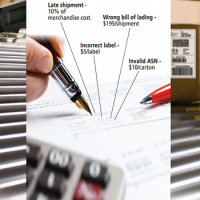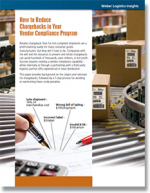How to Reduce Chargebacks in Your Vendor Compliance Program
This paper provides background on the origins and rationale for chargebacks, followed by a 7-step process for avoiding or overturning these costly penalties.
Retailer chargeback fines for non-compliant shipments are a profit-draining reality for many consumer goods manufacturers. But they don’t have to be.
Companies with the will and the resources to prevent and refute chargebacks can avoid hundreds of thousands, even millions, in lost profit.
Success requires creating a vendor compliance capability - either internally or through a partnership with a third party logistics partner (3PL) experienced in retail distribution.
When and Why Did Chargebacks Begin?
The history of chargebacks is a bit murky, but vendor compliance can be traced to the 1970s and the continued rise of the mass retail channel – Walmart, Target, Best Buy, Macy’s and other big box chains.
These companies recognized that their success depended on pushing huge volumes of inventory through their supply chain with maximum efficiency. So they invested in automated warehouses and sophisticated systems that allowed product to flow through with minimal human intervention. When a non-compliant shipment comes in, let’s say boxes with labels that cannot be automatically scanned by an overhead bar code reader, it becomes an exception that requires manual intervention (AKA: cost).
Chargebacks became the retailers’ answer to controlling these exceptions and keeping their supply chain machines running smoothly. In Walmart’s U.S. operations alone, merchandise from 60,000 suppliers flows through 130 DCs to 4,400 stores. It’s easy to see how non-compliant shipments could cripple efficiency.
Compliance requirements for each retailer are different and are spelled out in lengthy documents called routing guides – a set of procedures for suppliers on how goods are to be prepared and shipped. When these procedures are not followed, retailers issue a chargeback to cover the cost of the inefficiency created by the out-of-compliance shipment. A chargeback can be as much as 15%–20% of an invoice.
With some invoices easily totaling hundreds of thousands of dollars, vendors can get hit with chargebacks of $20,000 or more at a time. These chargebacks are not payments requested by retailers; they are automatically deducted from the supplier’s invoice.
Most frequent chargebacks by category
1. Early/late delivery
2. ASN/EDI violation
3. Improper label
4. Purchase order violation
5. Pricing error
6. Shortage in product shipped
7. Ticket issue
Source: VCF
What’s Related


Favorites





